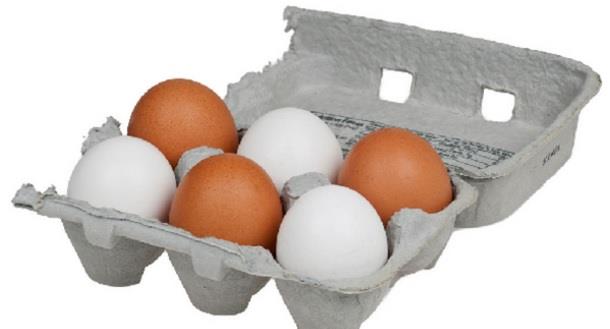Por Ellen Nemitz · ECO - 18 de dezembro de 2024 - Câmara ressuscitou “jabutis” da…
Casca de ovos na produção de embalagens biodegradáveis

A adição de nano partículas de casca de ovos nos bioplásticos pode criar a primeira embalagem biodegradável que dobra e resistente à quebra.
Eggshells to create ‘firstofitskind’ biodegradable packaging
Adding tiny shards of eggshell to bioplastic could create a firstofitskind biodegradable packaging material that bends but does not easily break, according to The American Chemical Society (ACS).
Researchers presented their findings from its ‘Nano Engineered Eggshell Toughened Polylactic Acid/AliphaticAromatic Copolyester Flexible Polymer Blend’, at the 251st National Meeting & Exposition of the ACS in San Diego, California, last week.
Alternative packaging material
Dr Vijaya Rangari, research associate professor, Tuskegee University, Alabama, said it was breaking eggshells down into their most minute components and then infusing them into a special blend of bioplastics.
“These nanosized eggshell particles add strength to the material and make them far more flexible than other bioplastics on the market,” he said.
“We believe these traits, along with its biodegradability in the soil, could make this eggshell bioplastic a very attractive alternative packaging material.”
Worldwide, manufacturers produce about 300 million tons of plastic annually. Almost 99% of it is made with crude oil and other fossil fuels.
Once it is discarded, petroleumbased plastics can last for centuries without breaking down. If burned, these plastics release carbon dioxide into the atmosphere, which can contribute to global climate change.
As an alternative, some manufacturers are producing bioplastics, a form of plastic derived from cornstarch, sweet potatoes or other renewable plantbased sources, that readily decompose or biodegrade once they are in the ground.
However, according to Rangari, most of these materials lack the strength and flexibility needed to work well in the packaging industry, so petroleumbased materials continue to dominate the market.
Rangari, graduate student Boniface Tiimob and colleagues at Tuskegee University experimented with various plastic polymers choosing a mixture of 70% polybutyrate adipate terephthalate (PBAT), a petroleum polymer, and 30% polylactic acid (PLA), a polymer derived from cornstarch.
Nanoparticles made of eggshells
PBAT, unlike other oilbased plastic polymers, is designed to begin degrading as soon as three months after it is put into the soil.
This mixture had many of the traits that the researchers were looking for, but they wanted to further enhance the flexibility of the material. So they created nanoparticles made of eggshells.
They chose eggshells, in part, because they are porous, lightweight and mainly composed of calcium carbonate, a natural compound that easily decays.
The shells were washed, ground up in polypropylene glycol and exposed to ultrasonic waves to break the shell fragments down into nanoparticles more than 350,000 times smaller than the diameter of a human hair.
They then infused a small fraction of these particles, each shaped like a deck of cards, into the 70/30 mixture of PBAT and PLA.
The researchers found this addition made the mixture 700% more flexible than other bioplastic blends. They concluded this pliability could make it ideal for use in retail packaging, grocery bags and food containers, including egg cartons.
Rangari received funding from the National Science Foundation and the Alabama Experimental Program to Stimulate Competitive Research.
ACS is a nonprofit organization chartered by the US Congress. With more than 158,000 members, it is the world’s largest scientific society providing access to chemistryrelated research through its multiple databases, peerreviewed journals and scientific conferences.
Fonte – Jenny Eagle, Food Production de 21 março de 2016
Boletim do Instituto IDEAIS de 28 de março de 2016
Instituto Ideais
www.i-ideais.org.br
info@i-ideais.org.br
+ 55 19 3327 3524





Este Post tem 0 Comentários